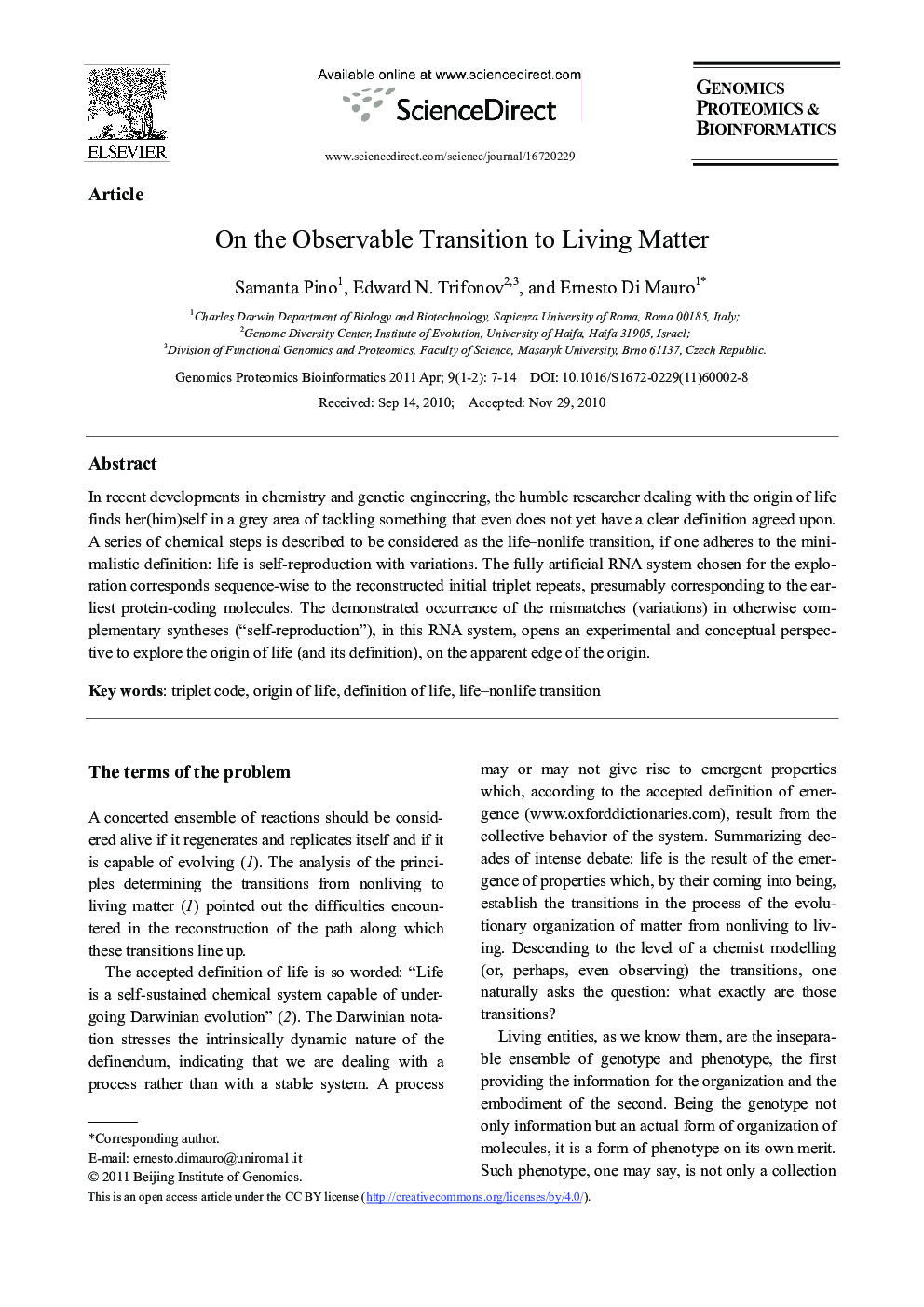| Article ID | Journal | Published Year | Pages | File Type |
|---|---|---|---|---|
| 2822706 | Genomics, Proteomics & Bioinformatics | 2011 | 8 Pages |
In recent developments in chemistry and genetic engineering, the humble researcher dealing with the origin of life finds her(him)self in a grey area of tackling something that even does not yet have a clear definition agreed upon. A series of chemical steps is described to be considered as the life–nonlife transition, if one adheres to the minimalistic definition: life is self-reproduction with variations. The fully artificial RNA system chosen for the exploration corresponds sequence-wise to the reconstructed initial triplet repeats, presumably corresponding to the earliest protein-coding molecules. The demonstrated occurrence of the mismatches (variations) in otherwise complementary syntheses (“self-reproduction”), in this RNA system, opens an experimental and conceptual perspective to explore the origin of life (and its definition), on the apparent edge of the origin.
